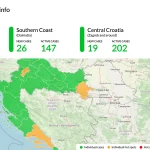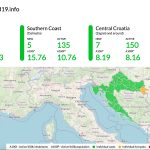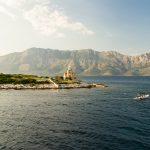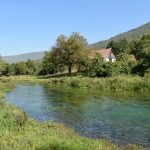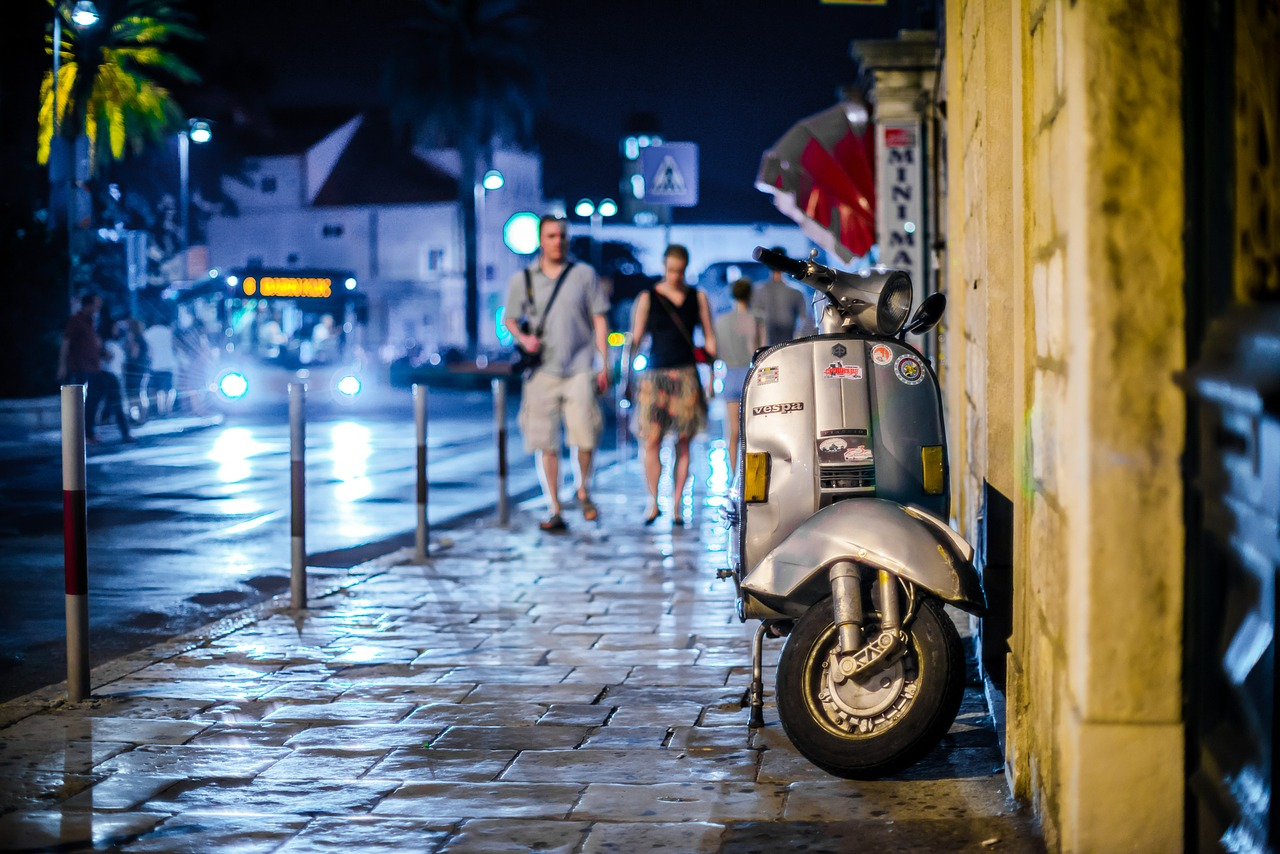
August 24, 2020 – The main tourist season in Croatia is over. Still, since tourists want to come despite tightened measures in some countries, the post-season could last, says the director of the Croatian Tourism Association (HUT), Veljko Ostojic.
Glas Istrereports that commenting in an interview on achievements in Croatian tourism this year, especially in hotels and camps of member companies of the Croatian Tourism Association (HUT), which are among the largest and leading in Croatia, Ostojic emphasizes that the foundation of success this season is safety and that Croatia is the winner of the Mediterranean this summer.
“We can all be proud of that, we had a quality epidemiological situation at the beginning of the main tourist season, thanks to the great efforts of epidemiologists, staff systems and the government, and we recorded great interest from tourists. But now, with the worsening of the epidemiological situation, we find ourselves in trouble over the continuation of the season,” says Ostojic, adding that everyone in tourism warned that due to several clubs and weddings, the whole season should not be questioned, but that is exactly what happened in the end.
However, even now, after some countries put Croatia on the red list, Ostojic says that we should not give up the rest of the season, because tourism accounts for about 20 percent of domestic GDP and “giving up tourism revenues in September and October would not be responsible neither from us in tourism, nor from anyone in Croatia”.
With epidemiological improvements, the postseason may take some time
On the other hand, he points out that “most countries that have tightened travel rules for their citizens in Croatia have clearly communicated the numbers we need to return to in order to go back to the category of safe countries, without restrictions. This should also be seen as a result of the continuous work of our institution, because when things are clear and transparent, then you know what needs to be done”.
All this means that by the end of August, September and the future period, as well as the current tourist season, will determine the epidemiological situation in the country and individual counties and regions.
“If in the next ten days we manage to improve the epidemiological situation significantly and as a result change the travel rules from certain countries, we can expect that some hotels and camps will work until the end of October, possibly one in the destination will be open all year,” he says. Ostojic, noting that hoteliers have no expectations from the congress post-season, for which they will have to wait for better times.
He also believes that the CNIPH, national and local headquarters have invested a lot of effort since the beginning of the epidemic, and the HUT has cooperated well with everyone, as well as that more can always be done, especially in communication. But instead of criticizing, he keeps looking for solutions more correctly.
Due to increased transparency and showing that the epidemiological situation is not the same in all parts of the country, HUT launched the COVID-19 regional tracker website this summer, updating data from headquarters, which was viewed by about 350,000 people.
They also published 12 weekly newsletters with the most important tourist information, which they sent to more than a thousand addresses and communicated daily, although this is not the main purpose of HUT, with domestic and foreign media, tour operators, individuals with the sole aim of making the season in Croatia better.
High occupancy of camps and hotels, but lower revenues
For the occupancy of facilities in the peak season, it reveals that it was the best in campsites, more than 80 percent, while hotels utilized more than 70 percent, in these categories of accommodation, the best occupancy was recorded by large facilities, both camps and hotels with more than 50 beds, with the fact that, as he points out, it is clearly shown that occupancy increases with the number of stars or quality.
Hotel houses in the northern Adriatic worked best, which was expected considering that this is the year of car guests, because everyone wanted to avoid the risks of joint transport, distant destinations, possible sudden repatriation and the like.
State assistance and ‘quick’ measures needed by the end of August
However, the financial results, says Ostojic, will be lower than the physical ones, which is also expected, and the realized revenues will definitely not be enough to cover winter. Help from the state will be needed, as it was from March to August.
“We expect the measures to be defined quickly. HUT has given its proposals to the relevant ministry and we expect answers by the end of August at the latest. Otherwise, the process of taking care of extra workers will begin,” Ostojic said, noting that they are satisfied with the first messages by the new Minister of Tourism and Sports Nikolina Brnjac, but also with the overall commitment to tourism of the Prime Minister and the Government.
It seems, he says, that there is an understanding in the government that tourism needs a set of short-term measures to maintain liquidity and jobs, and then a set of long-term measures to strengthen the competitiveness and resilience of the entire sector, for which they also expect concrete measures soon.
“It is certain that the EU Recovery Fund and the new financial envelope will help us all, for which we must prepare for concrete programs and projects. Talks about it have been launched and it seems to me that we are on the right track. We have a new tourism development strategy ahead of us, and we expect the active involvement of the sector and the adoption of ambitious, but also pragmatic and feasible results, because no one needs another strategy that will remain a dead letter on paper,” Ostojic believes.
Recognition, quality and sustainability are still key to success, but there is still a lot of work to be done
Although tourism is at a turning point globally in these circumstances, and it seems that the coronavirus will forever change some of the established ways of working in tourism and even the expectations of tourists, Ostojic still considers recognition, quality, and sustainability the keys to success.
“We have to focus here because we have to strengthen the overall competitiveness of Croatian tourism on these ‘pillars’ and there is a lot of work ahead of us,” he said. He believes that, in addition to the new tourism strategy, a number of fiscal issues need to be addressed – VAT brought to the level of Mediterranean competition, which is important for investment, increase the number of hotels with incentives, but also improve spatial planning, reduce bureaucracy, finalize the law on foreigners and the issue of the permanent season and to regulate the system of tourist boards with stronger control over the spending of funds.
He adds that the implementation of the Law on Tourist Land should be continued and a decree should be passed that will regulate the issue of the rental price.
“In the sector, we also expect an exemption from the payment of the fee for tourist land for this and next year due to a significant reduction in income,” concludes Ostojic.
For the latest travel info, bookmark our main travel info article, which is updated daily.
Read the Croatian Travel Update in your language – now available in 24 languages
Join the Total Croatia Travel INFO Viber community.



